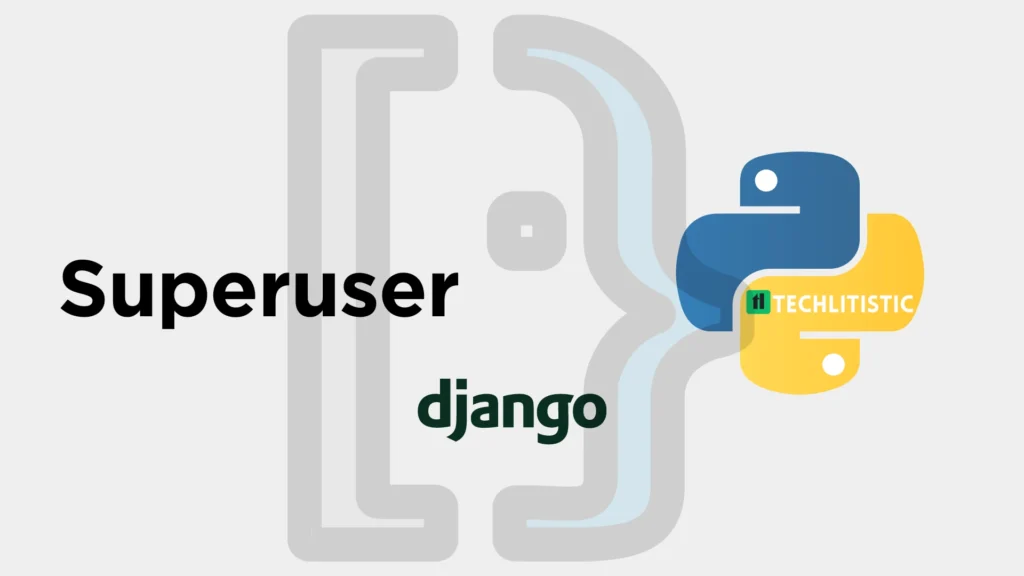The term ‘superuser’ might sound like tech, but it’s just a user account with a bit more complexity. Think of them as the project’s VIPs with extra permissions and access. You might also hear them called ‘admins’ or ‘administrators’ – all essentially cut from the same cloth. django create superuser using commands discussed in this blog

In Django, a superuser is your ticket to the admin panel with all its nifty features. The best part? No manual creation is required. Well, almost. Just make sure your project is properly migrated, or your superuser database might decide to play hide and seek.
The Createsuperuser Command
Creating a Django superuser is a breeze, thanks to the createsuperuser command. It taps into Django’s in-built authentication system, conveniently prepackaged in the latest Django versions.
Make Sure Authentication System
The good news? Django takes care of installing its authentication system for you. No fuss is needed. Just ensure your database is all caught up to speed:
bashCopy code
$ python manage.py migrate
Creating the Superuser
This is where the magic happens. Pop open your terminal and fire away:
bashCopy code
$ python manage.py createsuperuser
You’ll be prompted to spill the beans on the username, email (optional but handy), and secret password. Hit ‘Enter’ after each entry.
Username: testAdminUser Email address: test@gmail.com Password: ******** Password (again): ********
Stepping into the Admin Panel
With the superuser officially in the house, it’s time to bask in the glory of the Django admin panel. Just cruise on over to http://127.0.0.1:8000/admin/ in your trusty browser. Toss in your username and password, and voilà! You’re in.
Django Shell
If you’re feeling fancy, the Django shell offers another route. Think of it as your backstage pass to the database.
Activate the Django Shell
bashCopy code
$ python manage.py shell
Once you spot the >>> prompt
Summon the User Model
pythonCopy code
>>> from django.contrib.auth import get_user_model
>>> User = get_user_model()
Superuser Creation
Fire up the create_superuser function, tossing in the username, email (optional), and password:
pythonCopy code
>>> User.objects.create_superuser(‘username’, ’email’, ‘password’)
No email? No worries. This works, too:
pythonCopy code
>>> User.objects.create_superuser(‘username’, password=’password’)
Exit Django Shell
When it’s time to bow out:
pythonCopy code
>>> exit()
One-Liner Wonder
For the efficiency enthusiasts, create a superuser in one swift line:
bashCopy code
$ echo “from django.contrib.auth import get_user_model; User = get_user_model(); User.objects.create_superuser(‘username’, ’email’, ‘password’)” | python manage.py shell
The Command to Rule Them All
Remember, creating a superuser in Django is all about:
bashCopy code
$ python manage.py createsuperuser
Just make sure you’ve migrated your database with the following:
bashCopy code
$ python manage.py migrate
Unlocking the Admin Panel
And finally, to enter the admin realm:
Start the server:
bashCopy code
$ python manage.py runserver
Pop open a browser and glide to http://127.0.0.1:8000/admin/.
Key in your username and password from the superuser birthing process.
Steps to Create a Superuser in Django
| Step | Description | Command/Action | Example/Input |
|---|---|---|---|
| 1 | Open Command Line Interface | Navigate to project directory | cd /path/to/project |
| 2 | Run Command to Create Superuser | python manage.py createsuperuser | – |
| 3 | Enter Username | – | Username: srishti |
| 4 | Enter Email Address (optional) | Press Enter if none | Email address: example@gmail.com |
| 5 | Enter Password | – | Password: ****** |
| 6 | Confirm Password | – | Password (again): ****** |
| 7 | Superuser Created Confirmation | – | – |
Parting Tips
- Password Security: The command line keeps mum about the characters you type for security reasons. So, choose a password worthy of Fort Knox.
- Optional Email: A blank slate is fine if you’re not feeling the email vibe. Just hit ‘Enter’.
Conclusion
That’s how to create a superuser in Django using two different methods! Creating a superuser is crucial in managing your Django project and gaining access to the admin panel. You can efficiently manage your application through the Django Admin interface with the superuser account. Remember to keep your credentials secure and avoid using easily guessable passwords.
If you have any questions or feedback, please comment below. And for more related topics, do check out our blogs.
